The Quacks of Quedlinburg = strange name, fun game
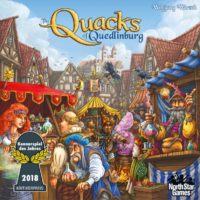
What do you do when you encounter a game with a strange name?
Do you quickly skip past it? Or do you become curious and want to find out more?
Well, if you’re in the second camp, then today’s your lucky day because we’ve got a good family board game for you from North Star Games – The Quacks of Quedlinburg!
No, this isn’t a game about ducks in a northern German town.
Well, part of that might be true – because Quedlinburg is a town in northern Germany. But the game has nothing to do with ducks.
Instead, The Quacks of Quedlinburg is about miracle doctor “quacks” showcasing their healing remedies.
In reality, the board game is a fun press-your-luck, bag-building game where players compete in brewing the best potions.
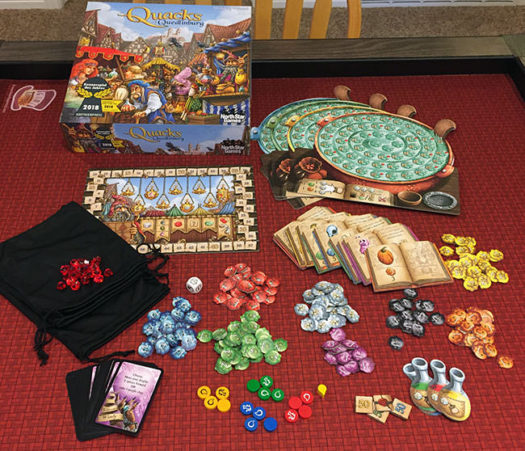
How to play The Quacks of Quedlinburg
Before we dive into how to play, we better define what a “bag-building” game means. A popular term introduced when Dominion was published was “deck-building”. In such a game, players start with a set number of cards in their personal deck. Over the course of the game, they acquire more cards to add to their deck to make it more powerful. As building their deck in this manner is a central part of the game, the term “deck-building” came into being.
Well, in this “bag-building” game, players start with a certain number of chips in their personal bag and use currency during the game to acquire more chips to add to their bag. Thus, their bag gets fuller with chips that allow them to do more powerful things as the game progresses.
Before starting The Quacks of Quedlinburg, each player gets a cauldron board, a flask, a bag, and 4 matching color markers.
Their blank marker is placed on the score track and one of their droplet markers is placed in the center space of their cauldron. Their Rat marker is placed in the bowl area of their cauldron board for use later.
Each player also starts with a set of 9 ingredient chips (4 white chips of 1 value, 2 white chips of 2 value, 1 white chip of 3 value, 1 orange chip of 1 value, and 1 green chip of 1 value) in their bag. (These starting chips and quantities are printed on each cauldron board.)
The Orange and Black ingredient books are placed in the center of the table and other colored ingredient books are randomized. Each color has 2 double-sided books. This means there are 4 different ways chips of that color may be used during a game. Players can either randomize or purposefully choose which ingredient power they want to use during the game. Once chosen, that side of each color book is placed in the center of the table for reference.

The game is played over 9 rounds – which are marked with a Round counter across the middle of the shared scoring board.
At the start of each round, a Fortune Teller card is drawn and placed face up. The special rule listed on this card is in effect for that round of play.
Next, players check the score track and count the number of rat tails between their score marker and the score marker in first place. They place their colored Rat marker that many spaces ahead in their cauldron.
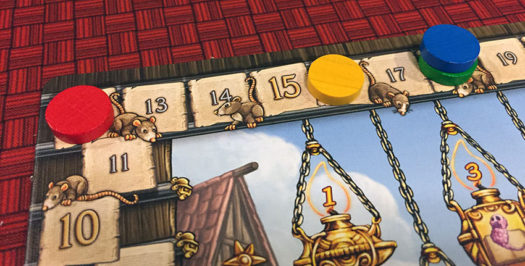
Then players start brewing their potions by drawing one chip at a time from their bag and placing it in their cauldron (beginning in the center and working outward). Although each player draws one chip at a time, all players do this simultaneously. So there aren’t any player turns during a round.
When placing a drawn chip on their board, players place it a number of spaces ahead of the previous chip depending on the value of the chip in hand. For example, if the printed value of the chip they drew is 2, they will place it 2 spaces ahead of the previous chip (or potion or Rat marker if it’s their first chip drawn).
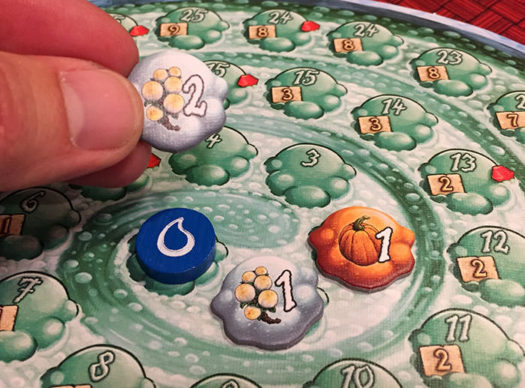
Also, when placing chips, if that color chip has a special power/action, it’s activated at the time of placement.
The White chips are bad ingredients and too many of them in the cauldron will cause the potion to explode. If the sum of all white chips drawn exceeds the value 7, the potion explodes. When this happens, the player stops and may not draw any more chips that round. (The last chip drawn is still placed in their cauldron.)
When a player draws a White chip, they may choose to place it back in their bag by using their Flask. They turn their Flask over and put the chip back. Then they continue drawing chips from their bag as before. The only restriction is that if the White chip drawn causes their potion to explode, they can’t use their Flask to put it back. Also, if their Flask is already face down, they obviously can’t use it either.
Once everyone has either exploded or chosen to stop, players move on to scoring and rewards.
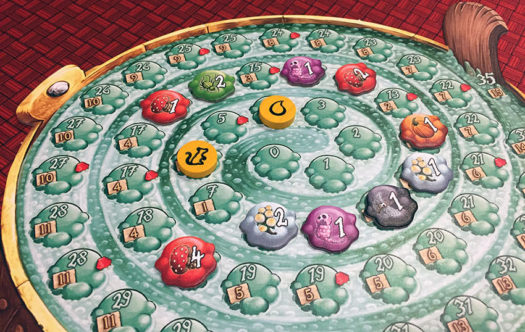
The space directly after the last chip placed shows what the player earns. The brown number indicates how many victory points they score. The large white number indicates how much they can spend on buying more chips. And if there’s a ruby icon, they also receive 1 ruby. If a player’s potion exploded, they must choose between either the victory points to gain or money to spend for new chips. They don’t get both.
The player who is furthest along in their cauldron without exploding also gets to roll a bonus die and receive its reward.
When buying more chips, players can buy either 1 or 2 new chips. The cost of the chips are indicated in the corresponding ingredient books in play.
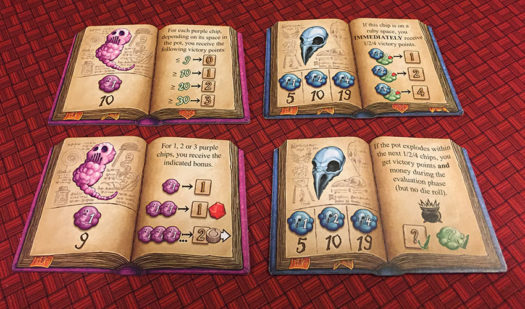
Before beginning a new round, players can spend 2 rubies to either move their droplet chip ahead one space in their cauldron or fill up their Flask (turning it back over to the active side).
The Round marker is also moved ahead one space at the start of each round. As indicated on the Round spaces, at the beginning of Round 2 and 3, more ingredient boards are added and at the beginning of Round 6, each player adds another White chip of value 1 to their bag.
The game ends after the 9th Round. The player furthest along on the score track (most points) wins!
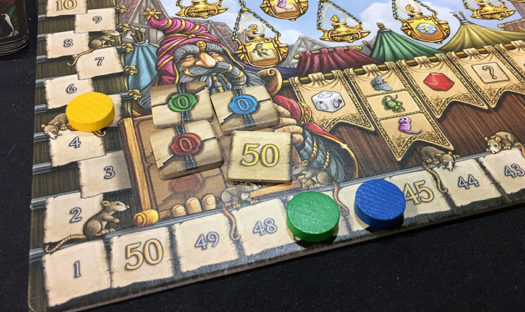
Can the whole family enjoy The Quacks of Quedlinburg?
The Quacks of Quedlinburg is a fun press-your-luck game that most everyone in the family can enjoy playing. While the game deals with probabilities, you don’t have to be a mathematician to enjoy the game.
The game centers around deciding whether or not to drawn one more chip out of your bag before stopping. At the outset you’ll have 9 chips in your bag – 7 of which are bad ingredient chips. And the total value of those 7 white chips is 11. And when the total value of white chips in your cauldron exceeds 7, your potion will explode.
You could draw a bunch of 1- and 2-value white chips in a row and dread pulling another chip because it might be the 3-value white chip and your potion will exceed 7 and explode. But since those 4 white chips are now out of the bag, your chances of drawing the starting green and orange chips has also gone up. So, do you draw more?
It’s all up to you!
Do you feel lucky?
And that’s the central fun in the game – deciding how far to push your luck.
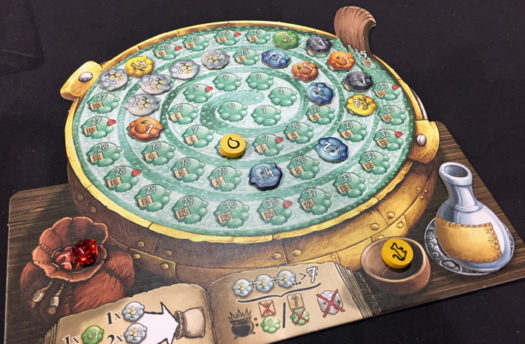
The next decision you’ll be face with is which color chips and of which values to purchase to add to your bag. Because those will change the odds of what you’re drawing from you bag.
It’s a great balance of luck and strategy that we love in a family board game!
The luck of the draw is big because you’re literally drawing chips from a bag. Yet, strategy also plays a role in which chips you focus on.
Another element that factors into all this that we love is the random set up of the ingredient boards. Since each color ingredient has 4 different abilities that could be at play in a game, the possibilities are endless of how they could all mix together.
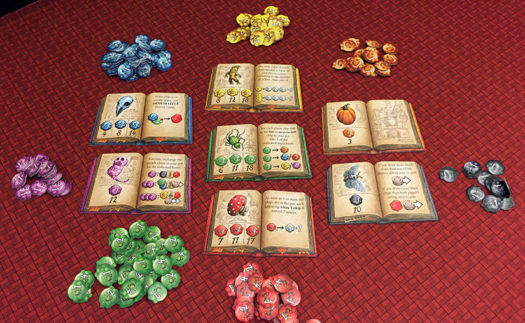
For your first game, the rule book suggests which ingredient boards and which side to use. But after that you’re on your own.
The visuals are helpful because each ingredient book has bookmark ends at the bottom of the book to indicate a level (1-4). So, if you want to play all ingredients at level 3 for example, that’s easy to select at the outset.
We also like that the Fortune Teller cards add a nice way to make the game play out differently every time. There are 24 Fortune Teller cards in the game but only 9 will be played during the course of a 9-round game. Each card is unique and adds a small twist to the game each round.
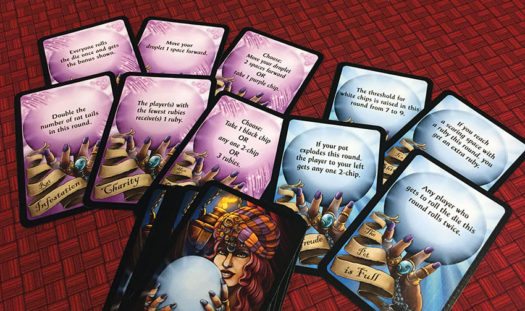
Another element we like is that the penalty for having your potion explode requires another choice. You can either choose to take victory points or currency to spend on more chips. So even though exploding limits you, you get to decide how it impacts you that round. We find that early in the game most players forgo the victory points and take the money for chips. Whereas later in the game, they’ll lean toward taking points.
Which leads to another nice element of the game – the Rat tails and marker. Rather than having runaway leaders, those that are falling behind get a boost in the next round depending on how far behind they are. For every Rat tail on the score track they’re behind the leader, they get to place their Rat token that far ahead in their cauldron for the next round. So, they’ll be more likely to get further along in their cauldron to keep the game closer for all players.
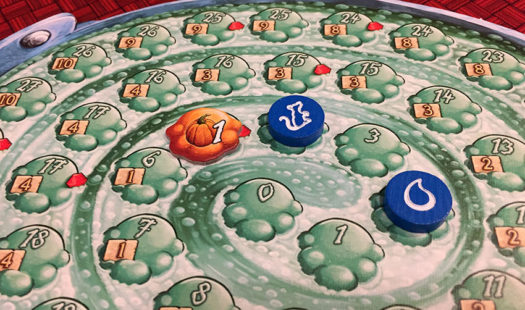
Which is nice because there isn’t a lot of player interaction in the game. There aren’t any player turns because what one player does won’t affect the other players. The only time it plays a role is when figuring out who gets to roll the bonus die. The player furthest along in their cauldron without exploding will get that bonus. But outside of that, your choices only impact your own results.
The only drawback we find in the game is that only 4 players can play at a time. Since there isn’t much player interaction, we wish there were enough components for 6 players to enjoy playing the game together (because we’re a family of 6).
The last thing we’ll mention that makes this a fun game is the components. The chips are nice and thick, the bag is high quality and the personal cauldrons are fantastic – they’re even double-sided. One side of the cauldron is used for an advanced version of the game.
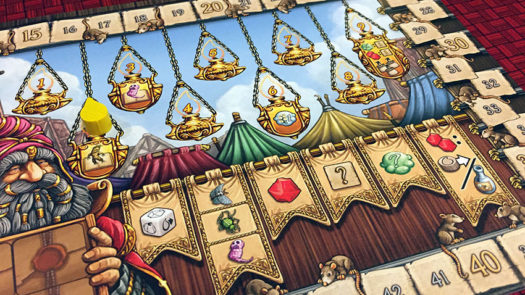
We also love that both the cauldrons and the score track have icons that help remind players of the different stages of the game. For example, the bottom of each cauldron shows what the starting chips are for each player. And the center of the score track board also shows icons for each stage of the scoring process at the end of each round as well as how to convert money and rubies to points in the final round of the game. Very helpful!
If you haven’t figured it out yet, we think The Quacks of Quedlinburg is a terrific board game families can enjoy playing together.
How does The Quacks of Quedlinburg score on our “Let’s Play Again” game meter?
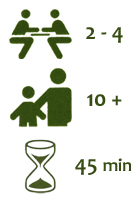 The Quacks of Quedlinburg is a game that’s definitely going to get a lot of replays in our family. Like Kingdom Builder, they random set up at the outset of the is a big draw for playing again and again. Every game will be different because the mix of ingredient powers will change from game to game. Plus, the Fortune Teller cards add another twist to make each game play out a bit differently.
The Quacks of Quedlinburg is a game that’s definitely going to get a lot of replays in our family. Like Kingdom Builder, they random set up at the outset of the is a big draw for playing again and again. Every game will be different because the mix of ingredient powers will change from game to game. Plus, the Fortune Teller cards add another twist to make each game play out a bit differently.
But ultimately, it’s the press-your-luck element of drawing chips from the bag that keep us coming back for more. It’s a fun, light tension that each player can choose for themselves of how lucky they feel.
Way to go North Star Games! The Quacks of Quedlinburg is a hit!
We’d like to thank North Star Games for a review copy of The Quacks of Quedlinburg.



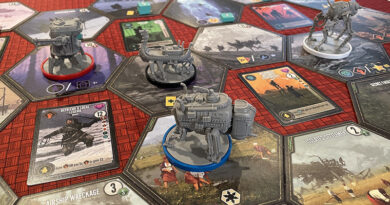
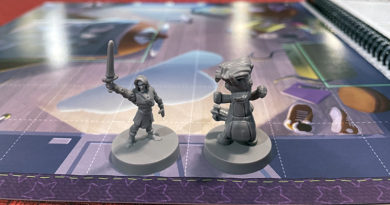
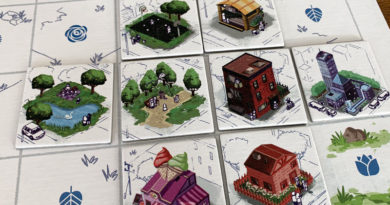
I’ve only played this once but it was a lot of fun and one I’d like to try again. I think my family would certainly enjoy it.
Chris – I think they’d enjoy it too.